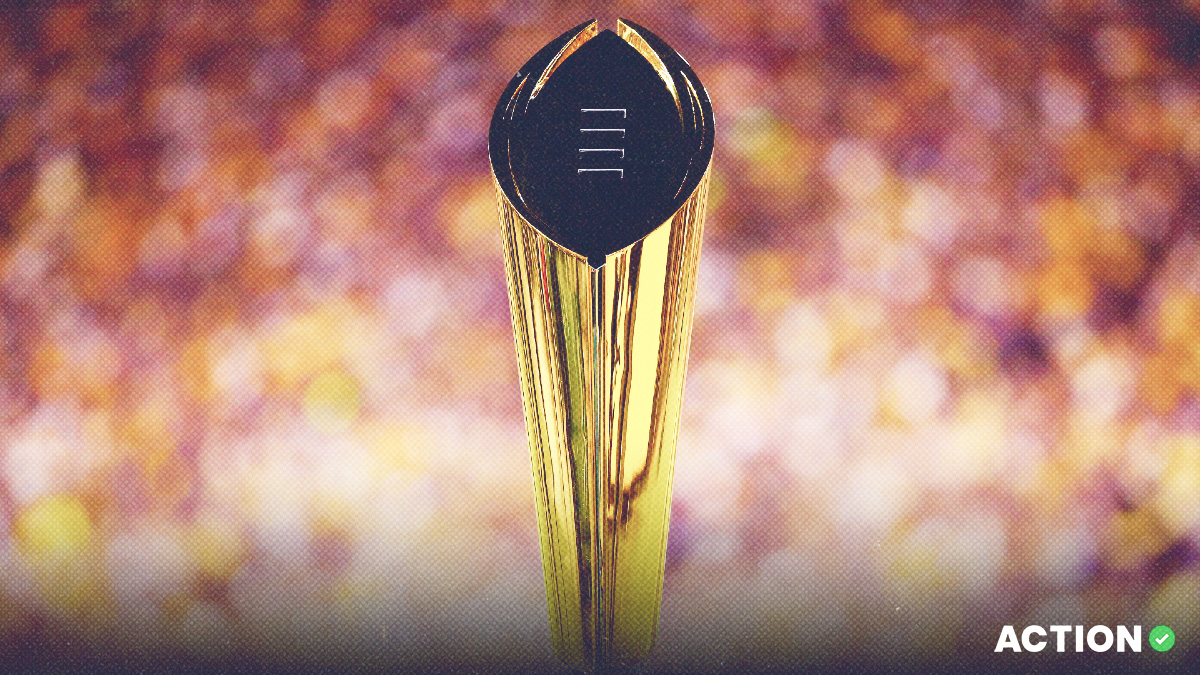Action Network senior writer Collin Wilson has been sharing what a 12-team playoff would look like each week in the wake of the CFP committee's rankings. Two things stand out to me right away.
The first is that every single first-round matchup is projected to be outside of 10 points from a point spread perspective:
- Florida State -13.5 vs. Tulane
- Oregon -10.5 vs. Penn State
- Texas -10.5 vs. Louisville
- Alabama -12 vs. Missouri
And the second is that our sport's regular season has already done a thorough job of vetting these teams – or at least will in the next two weeks.
Case in point, Ohio State and Michigan will meet on Saturday to settle the Big Ten East . Barring a sizable upset in Oregon State vs. Oregon, the Ducks and Washington are set to face off in the Pac-12 title game in two weeks. And finally, Georgia and Alabama are on a collision course for the SEC crown.
Would a larger field create interesting first-round matchups on an annual basis? Absolutely – particularly for teams like Tulane and Louisville, who haven't had the opportunity to fully strut their stuff this season due to scheduling limitations.
But have we really blown up the entire sport so that a 10-1 AAC team can get fed into the woodchipper? Did we do it to provide a Louisville team that lost by 17 to a moribund Pitt team on the road a path to the national title? And if so, why?
And that's not even mentioning teams like Penn State and Ole Miss, who are right on the cut line and have been convincingly beaten when given opportunities to break through this season against elite opponents.
All this expanded playoff is going to do is make it less likely that we get the best two teams on the field, at optima l health, by the end of the season. This isn't the PGA Tour – playing more frequently takes a toll and can turn the sport into a battle of attrition.
We saw it last weekend with the injury to Florida State's Jordan Travis, and we've seen it impact College Football Playoff games in recent years as well.
Expanded postseasons are made-for-TV spectacles that can deliver more exciting outcomes but come at the expense of identifying the sport's best team.
We've already seen this play out on the diamond.
The playoff expansion creep hit America's pastime slowly at first and then at an accelerated pace. Beginning in 1969, two teams from each league would face off in the postseason for a chance to play in the World Series. Just four of the 24 teams (16.6%) qualified that first year, and the percentage of playoff teams decreased as MLB expanded to 28 teams by 1993.
The result of these limited postseason slots was that the participants ofte ntimes were of the highest quality. Major League Baseball utilized this format for 25 years, and if you remove team data from the strike-shortened 1981 season, a few things stand out.
Teams that made the World Series averaged 97 regular-season wins, and 62.5% of World Series champions won 95-plus games. In those 24 Fall Classics, only one champion had fewer than 90 wins – the 1987 Minnesota Twins.
But then MLB decided to expand its postseason.
First, in 1995, they doubled the size of the postseason field from four to eight, while introducing the Wild Card in addition to divisional playoff bids. World Series champions with 95-plus regular season wins fell from 62.5% in the old format to 41.2% in the new postseason bracket.
And while we saw just one champion with fewer than 90 wins from 1969-93, two teams accomplished the feat in the next 12 years with the Yankees in 2000 and Cardinals in 2006.
In 2012, MLB added two more teams to the field, and once more in 2022, settling on six teams in each league for a total of 12 postseason berths.
What started as a postseason that included 16.6% of all teams in 1969, had ballooned to 40% by 2022. In the past five World Series, removing the COVID-19 season, at least one team with 93 regular-season wins or fewer has qualified for the Fall Classic.
The result of the expanded playoff is that lower-quality teams are competing on the World Series stage and the top teams are no longer meeting at all. In fact, the last time the top team from the AL met the top team from the NL was 10 years ago when the Red Sox faced the Cardinals.
Action Network's Anthony Dabbundo covers MLB throughout the year and had this to say about its postseason:
“The MLB postseason has never been a great way of truly determining who the best MLB team was in a given season due to the high variance nature of the sport. They play 162 games in a true marathon for almost six months, and then e ven a near-100 win team like the Rays in 2023 can be knocked out in two games. Or the Atlanta Braves, who had MLB's best record, get knocked out in four games in the NLDS, MLB's equivalent of the quarterfinals.

